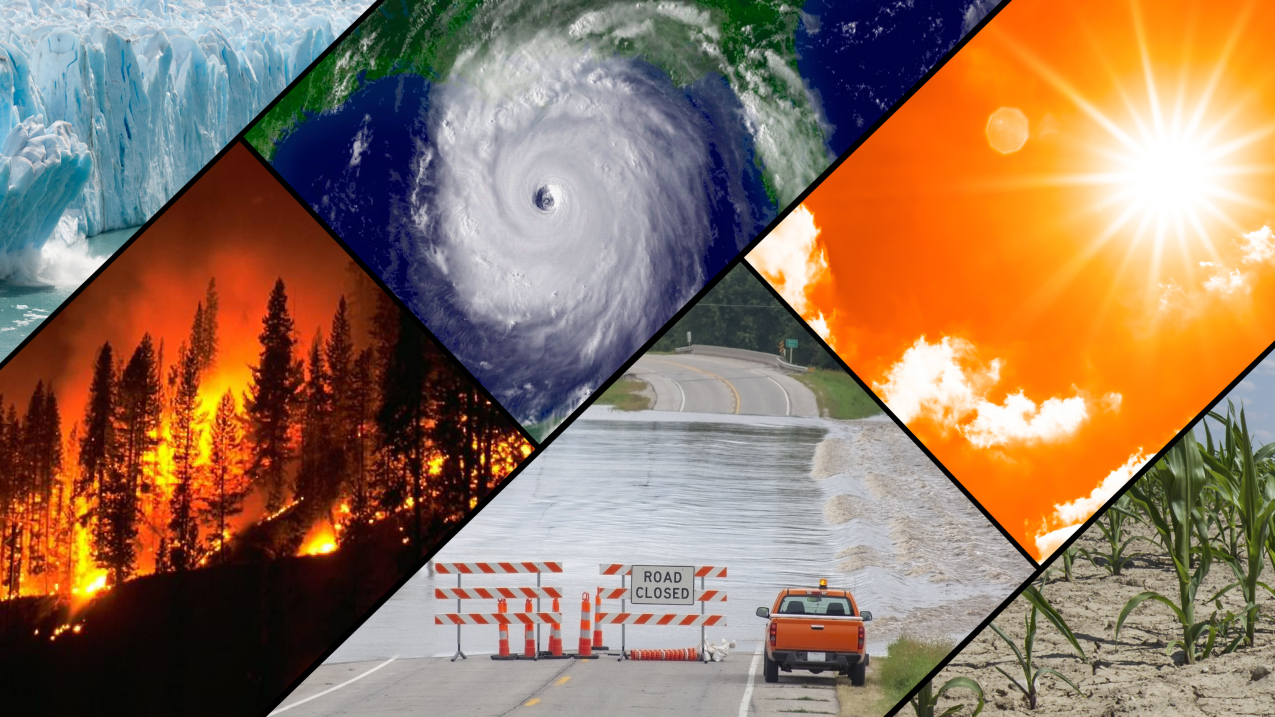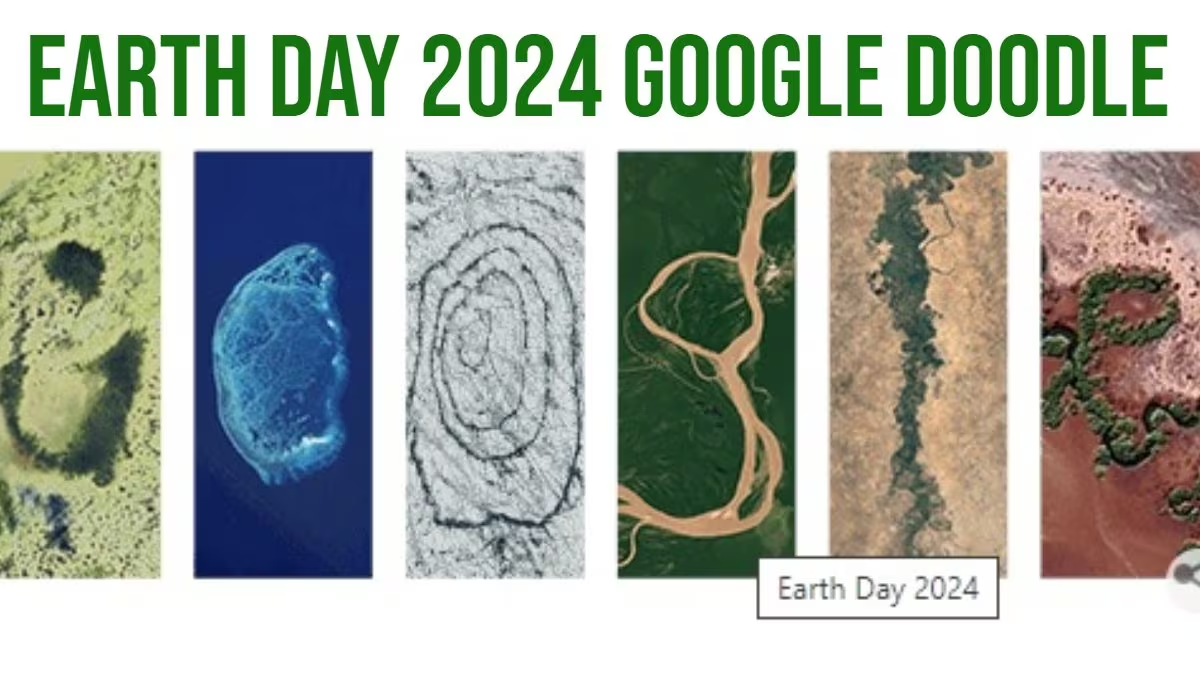Celebrating Earth Day 2024: Google Doodle Highlights Our Planet’s Beauty
Celebrating Earth Day 2024 is here, and once again, Google has joined the celebration with a special Google Doodle. This year’s doodle is a vibrant and poignant reminder of the beauty and fragility of our planet. As we navigate through an era of rapid environmental changes, this Earth Day serves as a crucial moment to reflect on our collective responsibilities toward preserving our home.
Google Doodle for Earth Day 2024
Google’s creative team has outdone themselves with this year’s Earth Day Doodle. The artwork showcases a mesmerizing scene of the Earth, surrounded by lush greenery, diverse wildlife, and crystal-clear waters. Each element of the doodle is meticulously crafted to highlight the various ecosystems that make up our planet. The doodle is not just a visual treat but also an interactive experience. Clicking on different parts of the doodle provides educational insights about the Earth, its ecosystems, and the importance of environmental conservation.
The doodle is a testament to the intricate beauty of nature, emphasizing the interconnectedness of all living things. From the smallest insects to the tallest trees, every element plays a vital role in maintaining the balance of our ecosystems. Google’s Doodle team has captured this essence, providing viewers with a captivating visual journey through some of the planet’s most stunning landscapes.
The Significance of Earth Day

Earth Day, observed on April 22 every year, is a global event dedicated to raising awareness about environmental issues and promoting sustainable practices. Since its inception in 1970, Earth Day has grown into a worldwide movement, inspiring millions to take action for the betterment of our planet. This year marks the 54th anniversary of Earth Day, a testament to the enduring commitment of individuals and organizations to environmental protection.
The first Earth Day was a response to the increasing awareness of environmental degradation and the need for greater protection of our natural resources. It brought together people from all walks of life, united by a common goal of safeguarding the environment. Over the decades, Earth Day has played a pivotal role in catalyzing environmental legislation, such as the Clean Air Act, Clean Water Act, and Endangered Species Act in the United States.
Environmental Challenges and Solutions
As we celebrate Earth Day, it’s crucial to acknowledge the environmental challenges we face. Climate change, deforestation, pollution, and loss of biodiversity are some of the pressing issues that demand our attention. However, Earth Day is also a day of hope and action. It’s an opportunity to explore and implement solutions that can make a significant impact.
Climate Change
Climate change is arguably the most pressing environmental challenge of our time. The Earth’s climate is undergoing significant changes, primarily due to human activities such as burning fossil fuels, deforestation, and industrial processes. These activities release large amounts of greenhouse gases (GHGs) into the atmosphere, leading to global warming and climate change.
Causes of Climate Change
- Burning Fossil Fuels: The combustion of fossil fuels like coal, oil, and natural gas for energy and transportation is the largest source of GHGs. Carbon dioxide (CO2) is the primary GHG emitted through these processes.
- Deforestation: Trees absorb CO2 from the atmosphere and store it as carbon. Deforestation reduces the number of trees available to absorb CO2, leading to higher concentrations of this gas in the atmosphere.
- Industrial Processes: Certain industrial activities, such as cement production, also release significant amounts of CO2 and other GHGs.
- Agricultural Practices: Agriculture contributes to GHG emissions through activities like livestock farming, which produces methane, and the use of synthetic fertilizers, which release nitrous oxide.
Impacts of Climate Change

The impacts of climate change are far-reaching and affect various aspects of life on Earth. Some of the most notable effects include:
- Rising Temperatures: Global temperatures have increased significantly, leading to heatwaves and altering weather patterns.
- Melting Ice Caps and Rising Sea Levels: The polar ice caps and glaciers are melting at an alarming rate, contributing to rising sea levels. This threatens coastal communities and ecosystems.
- Extreme Weather Events: Climate change has been linked to an increase in the frequency and intensity of extreme weather events, such as hurricanes, floods, droughts, and wildfires.
- Impact on Ecosystems and Biodiversity: Changes in temperature and weather patterns disrupt ecosystems, affecting the survival of various plant and animal species.
Solutions to Climate Change
Addressing climate change requires a multi-faceted approach, involving individual actions, community efforts, and global cooperation. Here are some key solutions:
- Transition to Renewable Energy: Shifting from fossil fuels to renewable energy sources like solar, wind, and hydropower can significantly reduce GHG emissions.
- Enhancing Energy Efficiency: Improving energy efficiency in homes, buildings, and industries can reduce energy consumption and emissions.
- Afforestation and Reforestation: Planting trees and restoring forests can help absorb CO2 from the atmosphere and mitigate climate change.
- Sustainable Transportation: Promoting public transportation, cycling, and electric vehicles can reduce emissions from the transportation sector.
- Climate Policies and Agreements: Supporting international agreements like the Paris Agreement and implementing national policies to reduce emissions are crucial for addressing climate change.
Deforestation
Deforestation is the large-scale removal of forests, often to make way for agricultural activities, urban development, or logging. Forests are vital for maintaining ecological balance, supporting biodiversity, and regulating the climate.
Causes of Deforestation
- Agriculture: The expansion of agricultural land, particularly for crops like soy, palm oil, and cattle ranching, is a leading cause of deforestation.
- Logging: The demand for timber and paper products drives illegal and unsustainable logging practices.
- Urbanization: The expansion of urban areas and infrastructure projects often leads to the clearing of forests.
- Mining: Extractive industries, such as mining for minerals and fossil fuels, contribute to deforestation and habitat destruction.
Impacts of Deforestation
Deforestation has severe consequences for the environment and human well-being:
- Loss of Biodiversity: Forests are home to a vast array of plant and animal species. Deforestation leads to habitat loss and threatens the survival of many species.
- Climate Change: Trees absorb CO2, and their removal increases the concentration of this greenhouse gas in the atmosphere, contributing to global warming.
- Disruption of Water Cycles: Forests play a crucial role in regulating the water cycle. Deforestation can lead to changes in precipitation patterns, affecting water availability.
- Soil Erosion: Trees and vegetation help anchor the soil. When they are removed, the risk of soil erosion increases, leading to land degradation.
Solutions to Deforestation
- Sustainable Forestry Practices: Implementing sustainable logging practices and certification schemes, such as the Forest Stewardship Council (FSC), can help ensure that forests are managed responsibly.
- Reforestation and Afforestation: Planting trees and restoring degraded forest areas can help mitigate the impacts of deforestation.
- Protected Areas: Establishing and enforcing protected areas can safeguard critical forest habitats from deforestation.
- Agroforestry: Integrating trees into agricultural landscapes through agroforestry practices can provide multiple benefits, including increased biodiversity and improved soil health.
Pollution
Pollution is the introduction of harmful substances or products into the environment, causing adverse effects on human health and the ecosystem. It can take various forms, including air, water, soil, and noise pollution.
Types of Pollution
- Air Pollution: Emissions from vehicles, industrial processes, and the burning of fossil fuels contribute to air pollution, releasing harmful pollutants like CO2, sulfur dioxide (SO2), nitrogen oxides (NOx), and particulate matter (PM).
- Water Pollution: Contaminants from industrial discharge, agricultural runoff, and improper waste disposal can pollute water bodies, affecting aquatic life and human health.
- Soil Pollution: The use of chemical fertilizers, pesticides, and improper waste disposal can lead to soil contamination, affecting plant growth and entering the food chain.
- Noise Pollution: Excessive noise from traffic, industrial activities, and urban areas can have adverse effects on human health and wildlife.
Impacts of Pollution
Pollution has significant negative impacts on the environment and human health:
- Health Effects: Air pollution is linked to respiratory and cardiovascular diseases, while water pollution can cause gastrointestinal illnesses and other health problems.
- Ecosystem Damage: Pollution can disrupt ecosystems, harming wildlife and reducing biodiversity.
- Climate Change: Certain pollutants, such as black carbon and methane, contribute to global warming.
- Economic Costs: Pollution can lead to increased healthcare costs, loss of productivity, and damage to infrastructure and natural resources.
Solutions to Pollution
- Reducing Emissions: Implementing stricter regulations on industrial emissions, promoting clean energy, and reducing vehicle emissions can help reduce air pollution.
- Waste Management: Proper waste disposal, recycling, and reducing plastic use can minimize pollution.
- Water Treatment: Treating industrial discharge and improving sewage systems can reduce water pollution.
- Sustainable Agriculture: Reducing the use of chemical fertilizers and pesticides and promoting organic farming can help prevent soil contamination.
Biodiversity Loss
Biodiversity refers to the variety of life on Earth, encompassing different species, ecosystems, and genetic diversity. The loss of biodiversity is a critical issue, as it threatens the stability and resilience of ecosystems.
Causes of Biodiversity Loss
- Habitat Destruction: Deforestation, urbanization, and land conversion for agriculture are major drivers of habitat loss.
- Climate Change: Changes in temperature and weather patterns can alter habitats and disrupt species’ survival.
- Pollution: Pollution can degrade habitats and poison wildlife.
- Overexploitation: Overfishing, hunting, and unsustainable harvesting of natural resources can lead to population declines and extinction.
- Invasive Species: The introduction of non-native species can outcompete or prey on native species, disrupting ecosystems.
Impacts of Biodiversity Loss
The loss of biodiversity has far-reaching consequences:
- Ecosystem Services: Biodiversity provides essential services like pollination, water purification, and climate regulation. The loss of species can impair these functions.
- Food Security: Biodiversity underpins agricultural productivity and resilience. The loss of genetic diversity can make crops and livestock more vulnerable to pests and diseases.
- Health: Many medicines are derived from natural compounds. The loss of biodiversity can limit the discovery of new treatments.
- Cultural and Recreational Value: Biodiversity enriches human cultures and provides recreational opportunities, such as ecotourism.
Solutions to Biodiversity Loss
- Habitat Protection: Establishing protected areas and wildlife reserves can safeguard critical habitats.
- Sustainable Resource Management: Implementing sustainable fishing, hunting, and forestry practices can prevent overexploitation.
- Pollution Control: Reducing pollution can help protect ecosystems and wildlife.
- Climate Action: Mitigating climate change can help preserve habitats and species.
- Invasive Species Management: Preventing the introduction and spread of invasive species can protect native biodiversity.
Taking Action on Earth Day

Earth Day is not just about acknowledging problems; it’s about taking meaningful action. Here are some ways you can contribute to the cause:
Individual Actions
- Participate in Local Cleanups: Join or organize community cleanup events to remove litter from parks, beaches, and other public spaces. Cleanups help reduce pollution, protect wildlife, and beautify the environment.
- Plant Trees: Contribute to reforestation efforts by planting trees in your community or supporting organizations that do. Trees absorb CO2, provide habitat for wildlife, and improve air quality.
- Reduce, Reuse, Recycle: Practice the three Rs to minimize waste and reduce your environmental footprint. Reusing items and recycling materials can significantly cut down on the amount of waste that ends up in landfills and oceans.
- Conserve Water: Reduce water usage by fixing leaks, using water-efficient appliances, and practicing mindful consumption. Water conservation helps protect freshwater ecosystems and ensures a sustainable supply for future generations.
- Use Public Transport: Opt for public transportation, cycling, or walking instead of driving. Reducing the use of personal vehicles can lower air pollution and decrease greenhouse gas emissions.
- Support Renewable Energy: If possible, switch to renewable energy sources for your home, such as solar or wind power. Supporting renewable energy reduces reliance on fossil fuels and helps combat climate change.
- Eat a Sustainable Diet: Choose locally-sourced, organic, and plant-based foods. Sustainable eating practices reduce the environmental impact of agriculture and support local economies.
- Educate Yourself and Others: Learn more about environmental issues and share your knowledge with friends, family, and your community. Education is a powerful tool for driving change and inspiring action.
- Support Eco-Friendly Brands: Choose products from companies that prioritize sustainability and environmentally friendly practices. Supporting green businesses can drive demand for sustainable products and encourage more companies to adopt eco-friendly practices.
- Advocate for Change: Use your voice to advocate for environmental policies and regulations. Support organizations and initiatives that work towards protecting the environment and promoting sustainability.
Community Efforts
- Community Gardens: Start or join a community garden project. Community gardens promote sustainable agriculture, provide fresh produce, and strengthen community bonds.
- Green Building Projects: Advocate for and participate in green building projects in your community. Green buildings use sustainable materials, are energy-efficient, and have a lower environmental impact.
- Environmental Education Programs: Support or volunteer for environmental education programs in schools and community centers. Educating the next generation about the importance of environmental stewardship is crucial for long-term sustainability.
- Local Conservation Efforts: Get involved with local conservation organizations that work to protect natural habitats and wildlife. Volunteering for conservation projects can make a tangible difference in preserving biodiversity.
- Public Transport Initiatives: Advocate for improved public transport infrastructure in your community. Efficient and accessible public transportation can reduce the number of vehicles on the road and lower emissions.
Global Cooperation
- International Agreements: Support international environmental agreements and treaties, such as the Paris Agreement, which aim to address global environmental challenges like climate change.
- Global Conservation Initiatives: Participate in and support global conservation initiatives that work to protect endangered species and critical habitats worldwide.
- Sustainable Development Goals: Advocate for the United Nations Sustainable Development Goals (SDGs), which include targets for clean water, renewable energy, sustainable cities, and climate action.
- Cross-Border Collaboration: Encourage cross-border collaboration on environmental issues, such as transboundary pollution and wildlife migration corridors. Collaborative efforts can lead to more effective solutions and greater impact.
Conclusion
As we celebrate Earth Day 2024, let’s be inspired by Google’s beautiful doodle and take tangible steps towards a more sustainable future. Each action, no matter how small, contributes to the larger goal of preserving our planet for future generations. Together, we can make a difference and ensure that the beauty and diversity of Earth continue to thrive.
Earth Day is a reminder that we all share a common home and a collective responsibility to protect it. By taking individual, community, and global actions, we can address the environmental challenges we face and build a sustainable future. This Earth Day, let’s commit to making choices that benefit the planet and inspire others to do the same.
Happy Earth Day!







